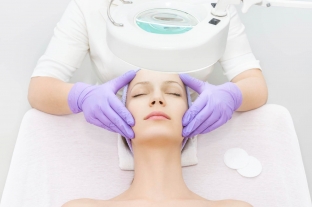The use of peeling as an attempt to rejuvenate the appearance, some researchers attribute to very ancient times, when people tried to use certain products for skin care, such as fermented milk or wine, not realizing that the first chemical peels with AHA acids were carried out. Despite the fact that aesthetic medicine today has a lot of cleansing methods, chemical peels continue to hold their positions as a popular procedure, since they practically do not require technical means, but perfectly rejuvenate the skin. Read on estet-portal.com.
When and to whom is peeling indicatedOne of the basic rules to avoid side effects and complications during chemical peeling procedures – This is the correct selection of patients. Many of those who come to a beautician with a desire to achieve a rejuvenating result are interested in this procedure, because they consider it easy and harmless. It should be explained that chemical peeling is a controlled destruction of the epidermis – full or partial, with or without dermis, which is expected to result in regeneration of the dermis and epidermis. Due to this regeneration, the following skin imperfections can be combated:
- pigment disorders,
- acne and scars, pigmentation remaining after this disease,
- certain forms of acne vulgaris,
- enlarged pores,
- small superficial wrinkles,
- signs of photoaging,
- sebaceous gland hyperplasia,
- some types of keratosis and dermatosis.
The procedure also has a number of contraindications: these are any active infections (bacterial, viral or fungal), open wounds, preclinical forms of inflammatory dermatosis. Be sure to find out everything about the tendency of the skin to scarring, to keloid, especially if you have a medium or deep peel.
Chemical peeling is not performed if the patient is taking medications that have a photosensitizing effect, as well as if they have used drugs with isotretinoin within the past 6 months.A separate issue should be discussed about patients with high expectations from the use of peeling and about patients with whom conflicts have already arisen regarding their non-compliance with the recommendations of the doctor – for example, about limiting insolation or uncontrolled medication. Such cases can also, under certain conditions, be attributed to contraindications for chemical peels, since the risk of getting a complication in such a patient is very high.
Read also: How to choose a peeling for facial skin, depending on the age of the patient
Features of preparation for peeling, which helps to avoid complicationsA detailed history of the patient should be taken and the patient should be asked not only about past illnesses or medications, but also about family tendency to scarring of the skin, and about the time he usually spends outdoors, and how often he has herpetic eruptions. If a phenol peel is due, it is important to find out everything about smoking habits and cardiovascular diseases, as well as conduct a medical examination of the patient.

Required for chemical peelsPre-peel preparation starts 2-4 weeks before the upcoming procedure and has the following goals:photo documentation and obtaining the informed consent of the patient.
- helps clarify possible intolerance to certain chemical agents,
- forces the patient to start following the doctor's recommendations,
- prepares the skin to receive the peeling solution.
Post-procedural care is based on the doctor's knowledge of the specific stages of skin healing after damaging cosmetic procedures. The patient is given detailed recommendations for facial care, and their implementation should be constantly monitored. If necessary, supportive drug therapy is prescribed.
Proper selection of patients for peeling, adequate preparation of the skin for chemical peeling, proper care after the procedure will ensure a satisfactory cosmetic result and help to avoid unwanted side effects.







Add a comment